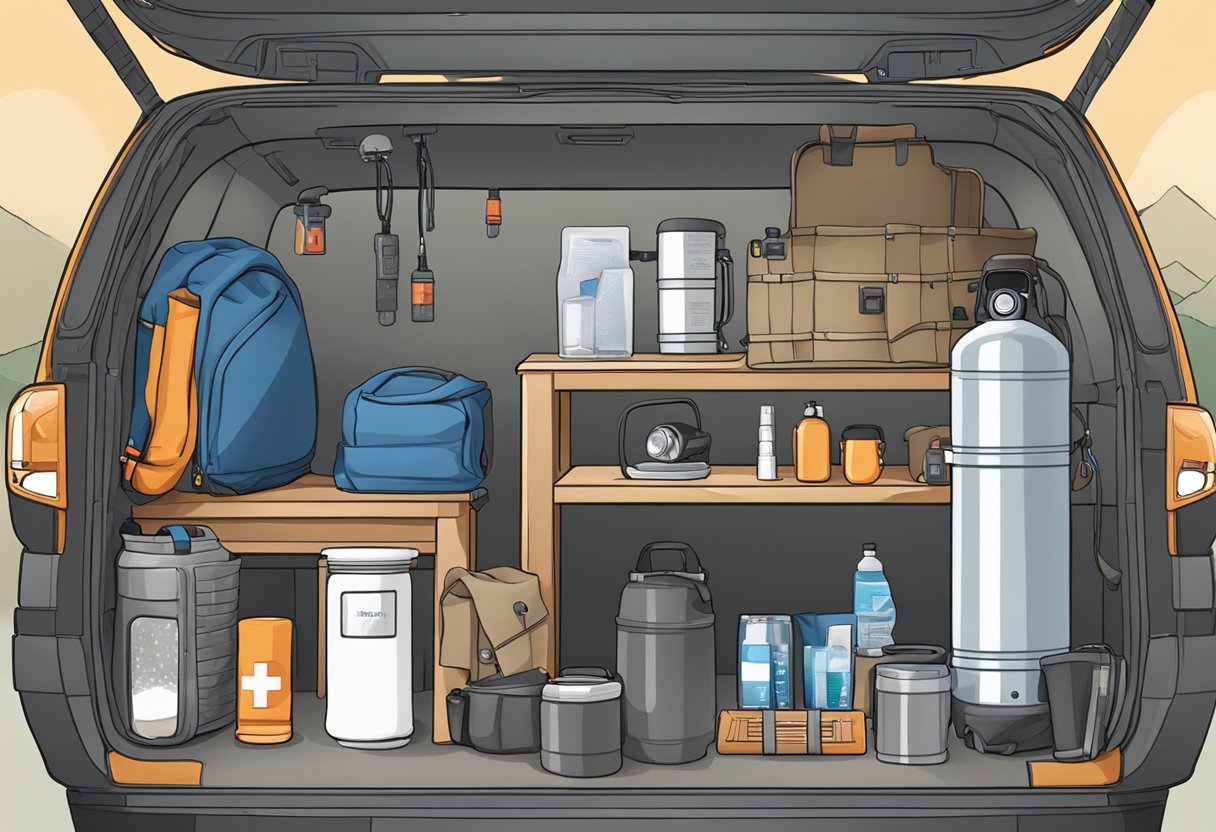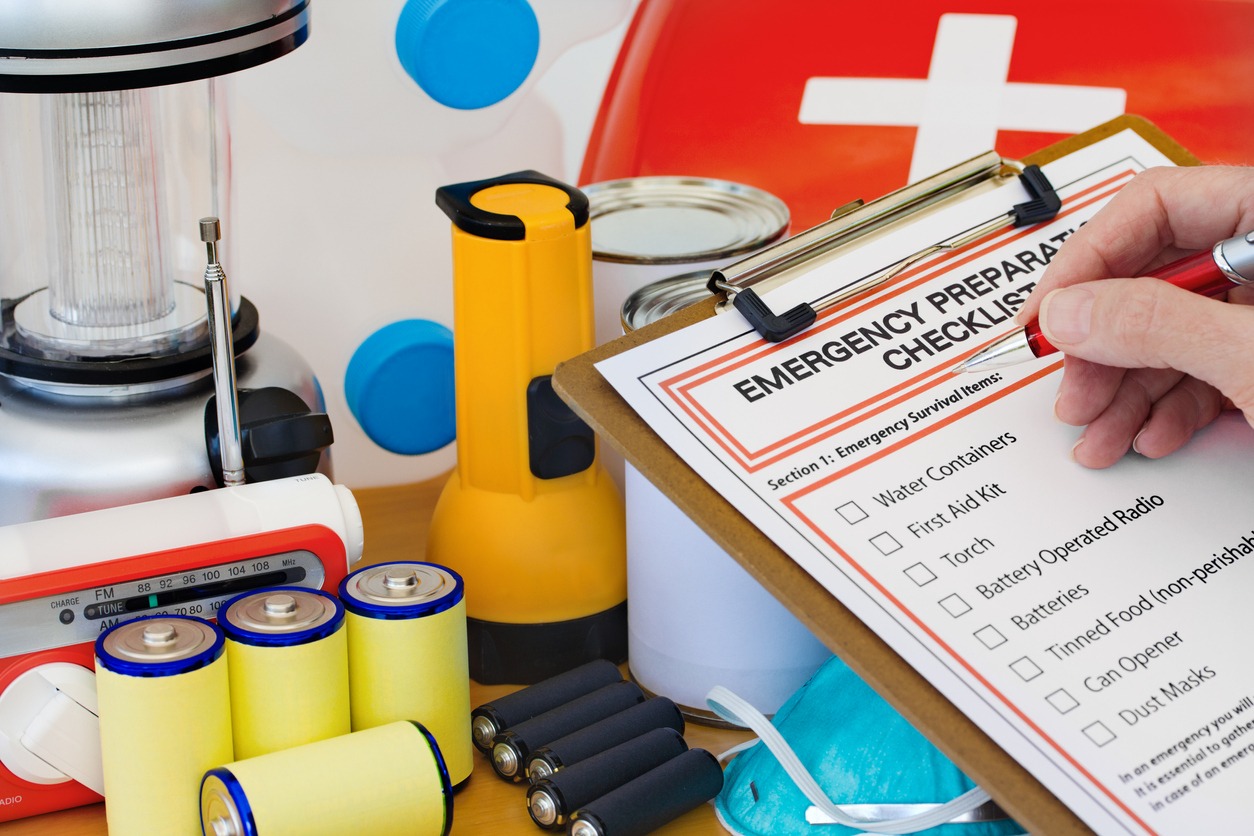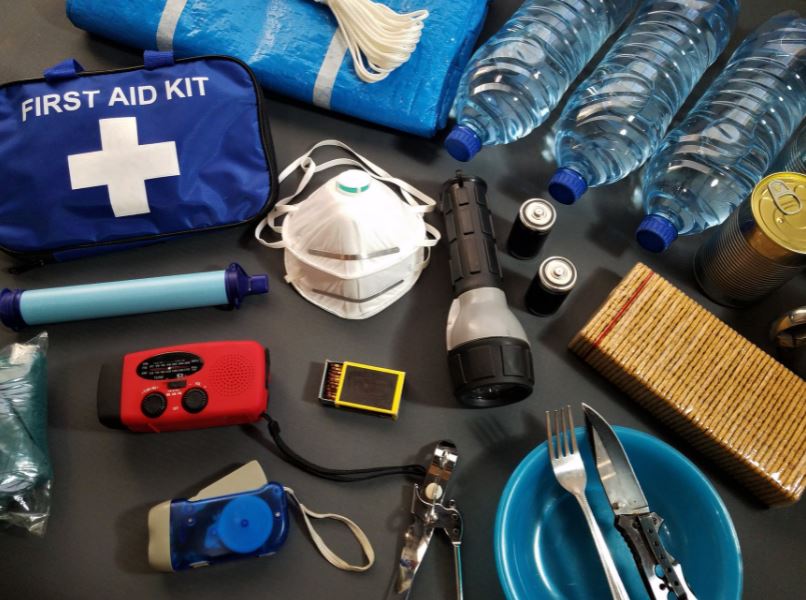What are some commonly overlooked SHTF Gear and Supplies: Essential Prepper Insights

In preparing for a SHTF (Stuff Hits The Fan) scenario, it's easy to focus on the obvious essentials like food, water, and shelter. Yet, some crucial items often go unnoticed, which can make a significant difference in survival situations. These overlooked pieces of gear might be hiding in your home already, ready for repurposing in an emergency.
Key items that often get overlooked include aluminum foil, personal hygiene supplies, and simple medical tools. Aluminum foil, for instance, can be used not just for cooking but also for making a solar oven, signaling for help, or even protecting electronics. Personal hygiene gear like toothbrushes and toilet paper help maintain health and morale. Basic medical tools such as a tourniquet can save lives when professional help is far away.
Keeping these lesser-known items in mind while preparing your SHTF gear can enhance your chances of enduring tough conditions. A well-rounded approach to survival includes these often forgotten supplies, ensuring you are prepared for a wide array of challenges.
Understanding SHTF Scenarios
SHTF scenarios refer to situations where everyday life is severely disrupted due to emergencies or disasters. These scenarios require thorough preparedness and understanding of potential threats to ensure safety.
Definition and Significance of SHTF
SHTF stands for "Shit Hits The Fan." It's a term used to describe scenarios where a disaster or emergency drastically impacts society. These situations range from natural disasters to economic collapses, leading to chaos and disorder. Understanding SHTF is crucial because it emphasizes the importance of readiness. People need to be prepared to ensure their safety and well-being during such events.
Different Types of Disasters
Disasters that could trigger SHTF scenarios include:
- Natural Disasters: Earthquakes, hurricanes, floods, and wildfires can cause massive damage and disrupt normal life.
- Man-Made Disasters: This includes political unrest, war, or economic collapse. These situations can lead to shortages of essential supplies.
- Pandemics: Widespread disease outbreaks can strain medical resources and disrupt daily routines.
Each type of disaster necessitates specific preparations to handle unique challenges, emphasizing the need for a comprehensive emergency plan. Preparing for various scenarios ensures greater resilience and adaptability.
Fundamentals of SHTF Preparedness

Understanding what to prepare and how to think in survival scenarios is crucial. Key elements include adopting a prepper's mindset and prioritizing essential needs.
The Prepper's Mindset
Prepping is about being ready for emergencies. Preppers focus on self-reliance and resilience. They assume that any scenario, big or small, could occur. Planning and adaptability are core aspects. Preppers think ahead, creating detailed plans for various situations. They also remain flexible, ready to change plans if needed. Knowledge plays a significant role. Preppers educate themselves on survival skills. They learn how to find food and water, use tools, and treat injuries. Stress management is also vital. Keeping calm helps make better decisions under pressure. This improves their chances of survival.
Prioritizing Needs for Survival
In any emergency, basic needs must be met. The top priorities include shelter, food, and water. Each serves a critical role in survival.
- Shelter shields from the elements. A tent or tarp can be a temporary solution. Proper clothing also helps maintain body temperature.
- Food is essential for energy. Non-perishable items like canned goods and dried fruits are practical. Stockpiling such items ensures they last long.
- Water is crucial. Preppers store bottled water and use purification methods like iodine tablets or portable filters. Ensuring a clean water supply can prevent dehydration and illness.
- Medical supplies can't be ignored. Basic first aid kits treat minor injuries and prevent infections. They might include bandages, antiseptics, and personal medications.
Essential SHTF Gear

When preparing for an SHTF scenario, having the right gear is crucial. This section focuses on selecting a suitable backpack and essential multi-use tools and weapons.
Choosing the Right Backpack
A quality backpack is vital for carrying all your essential gear. The tactical backpack is a top choice due to its durability and functionality. These backpacks often come with multiple compartments, allowing you to organize your supplies efficiently. Look for one with a strong frame and waterproof material to protect your items.
When selecting a tactical backpack, consider the size and weight. It needs to be large enough to fit your gear but lightweight enough to carry for long periods. Comfort is key; padded straps and a supportive back panel can make a big difference. Also, think about accessibility. You want a backpack that allows you to easily reach important items without unpacking everything. Some tactical backpacks come with MOLLE (Modular Lightweight Load-carrying Equipment) systems, which let you attach additional pouches and gear.
Multi-Use Tools and Weapons
Versatile tools and reliable weapons are essential for survival. A multitool is one of the most practical items you can carry. These tools usually include a knife, pliers, screwdrivers, and other handy gadgets in one compact device. When it comes to weapons, self-defense tools like an AR-15, shotgun, or a sturdy rifle are highly recommended. These weapons can be used for protection and hunting. Ensure you have enough ammunition stocked up and that your weapons are well-maintained.
Consider carrying a fixed-blade knife rather than a folding one for more robust tasks. Personal hygiene items, though often overlooked, are also crucial. Basic supplies like toothpaste, toilet paper, and soap help maintain health and morale in tough situations. Incorporate items that can serve multiple purposes. Duct tape, for instance, can be used for repairs, medical emergencies, and even creating makeshift gear. Always be mindful of weight and necessity when packing these tools and supplies.
Shelter and Comfort

Proper shelter and maintaining warmth are essential for surviving an SHTF situation. People must focus on temporary shelters like tents and tarps and ensure they have adequate items for warmth and rest.
Temporary Shelter Solutions
Temporary shelters can be lifesavers in emergencies. Tents are a popular option because they provide a quick and effective way to stay protected from the elements. They come in various sizes and designs, catering to individual or family needs. Tarps and ponchos can also be used to create makeshift shelters. They are versatile and lightweight, allowing for easy transport and setup. Survival tents are another option, designed specifically for emergency situations, offering basic protection with an ultralight design. For those caught without traditional shelters, utilizing abandoned structures or natural formations can provide immediate refuge. Always scout for a dry, elevated spot to set up your temporary shelter, ensuring it’s safe from flooding or animal intrusions.
Maintaining Warmth and Rest
Maintaining warmth in an emergency is crucial for survival. Sleeping bags come in various ratings for different temperatures, providing essential insulation. Blankets, especially those with thermal properties, are also vital. These can be used in conjunction with sleeping bags for added warmth. Layering clothing is another critical aspect, taking advantage of items like ponchos to protect against wind and rain. Fire-making tools and materials are essential to maintaining warmth. Additionally, bringing along heat-reflective blankets can help conserve body heat. Rest is equally important. Proper rest areas, whether in a tent or a makeshift shelter, can boost morale and physical strength. Using a sleeping pad under your sleeping bag adds extra insulation and comfort, ensuring a better night's rest.
Water and Hydration

Having a reliable source of water and ways to ensure it is safe to drink is crucial in an SHTF scenario. Here are some methods and tools that can help you stay hydrated and ensure your water is safe.
Water Purification Methods
- Boiling: One of the most effective ways to purify water is boiling it. Boiling kills most pathogens.
- Water Purification Tablets: These are small, lightweight, and easy to carry. They use chemicals to kill bacteria and viruses. Common brands include Micropur and Aquamira.
- Water Filters: Portable water filters like the LifeStraw or Sawyer Mini are handy. They can remove bacteria and protozoa. Some models can even handle viruses.
- Solar Disinfection: This method involves filling a clear plastic bottle with water and exposing it to sunlight for several hours. UV rays from the sun can kill harmful microorganisms.
Carrying and Storing Water
- Water Bottles: Having a durable, reusable water bottle is essential. Stainless steel bottles are sturdy and can double as a container for boiling water.
- Hydration Bladders: These allow for hands-free drinking. They have a tube that you can drink from, making them practical when you’re on the move.
- Water Storage Containers: Large containers or water barrels are useful for storing substantial amounts of water at home. Ensure they are made from food-grade materials.
- Collapsible Water Containers: These are space-saving options that can be easily packed away when not in use. They can be quickly filled when needed.
Proper handling and regular cleaning of water storage containers is vital to prevent contamination and ensure a safe water supply.
Food and Nutrition
In an emergency, having the right food supplies is crucial to maintain energy and overall health. This section covers nutrient-rich foods and how to store them for long-term use.
Nutrient-Rich Food Selection
Choosing the right emergency food supply is vital. Protein-rich foods like beans, nuts, and canned meat provide essential nutrients. Carbs are important for energy and can be found in rice, pasta, and oats. Fats offer high-calorie options like olive oil and peanut butter, which are compact and easy to store. Energy bars are another great option. They're portable and often packed with a mix of nutrients. Including vitamins and supplements in the stockpile can also help fill any nutritional gaps.
Long-Term Food Storage
Long-term food storage is about keeping food fresh for extended periods. Canned goods like vegetables, fruits, and soups have long shelf lives. They should be rotated to keep the stockpile fresh. Dehydrated and freeze-dried foods last even longer and are lightweight, making them suitable for limited space.
Vacuum sealing extends the life of dry foods like rice and pasta. Mylar bags with oxygen absorbers are great for grains and legumes. Proper storage conditions, like a cool, dry place, are essential to prevent spoilage and pests. By selecting nutrient-rich options and storing them effectively, an emergency food supply can be both varied and long-lasting.
Health and First Aid
In emergencies, having the right health and first aid supplies is essential. First aid kits should be well-stocked while knowing how to address common injuries can save lives.
Comprehensive First Aid Kits
A first aid kit must be complete and easily accessible. Some essential items include:
- Bandages: Various sizes for different wounds
- Gauze: For cleaning and dressing wounds
- Antibiotic cream: To prevent infections
- Tweezers: For removing debris
- Thermometer: To check for fevers
- Aspirin and Ibuprofen: For pain and inflammation
- Personal medication: Any prescribed medications, like insulin
Having these items ensures that you’re prepared for a range of medical issues.
Addressing Common Injuries
Common injuries can be stressful, but with the right supplies, they are manageable. For wounds, use bandages and gauze to stop bleeding and protect the area. A tourniquet can be life-saving for severe bleeding. For muscle strains or headaches, Ibuprofen and Aspirin are helpful. Never forget to include a bandana; it can act as a makeshift sling or bandage in a pinch. Using these supplies correctly can make a significant difference in many SHTF scenarios.
Navigation and Signaling
Navigating and signaling are critical in any survival scenario, ensuring that you can find your way and communicate with others if needed. Essential tools include reliable maps, a good compass, and emergency signaling items.
Maps and Compass Usage
A topographical map is essential for understanding the terrain. A high-quality, waterproof map will be durable and reliable. Familiarize yourself with reading contour lines to determine elevation and landscape features. A compass is indispensable for navigation. It allows you to maintain a direction, even if landmarks are not visible. Learning to use a compass involves understanding magnetic declination, which is the angle between magnetic north and true north. This adjustment is crucial for accurate navigation.
Emergency Signaling Tools
Emergency signaling tools help rescuers find you if you get lost. A whistle is a compact and loud option that requires no batteries. It can be heard from a great distance and is useful for scaring off animals as well. Signal mirrors are small but effective. They can reflect sunlight to attract attention from miles away. In addition, flares and smoke signals are excellent for visibility, especially in dense areas or at night. Carrying multiple signaling tools ensures you have backup options in different scenarios.
Lighting and Fire
It's crucial to have reliable sources of light and tools for starting a fire during an emergency situation. This ensures that one can navigate in the dark and stay warm or cook food.
Reliable Lighting Options
Reliable lighting is essential. Flashlights are portable and easy to use. High-quality LED flashlights provide bright light and have long battery life.
- Headlamps are also useful to keep hands free while working. Rechargeable options can be paired with solar chargers.
- Lanterns offer a broader range of light. Battery-operated or solar lanterns are effective solutions.
Pack extra batteries to keep your devices running. Solar-powered options provide continuous use without relying on disposable batteries.
Tools for Starting Fire
- Fire Starters are indispensable. Matches and lighters are common, but waterproof matches or stormproof lighters are more reliable.
- Ferro rods and magnesium fire starters are excellent for their longevity and ability to work in wet conditions.
- Fire starter kits often include multiple options. Having a variety increases the chances of successfully starting a fire under various conditions. Carry tinder like cotton balls soaked in Vaseline or store-bought fire starters, which ignite easily.
Lighting and Fire Tools
| Tool | Purpose |
|---|---|
| Flashlight | Portable, bright lighting |
| Headlamp | Hands-free lighting |
| Lantern | Broad light coverage |
| Matches | Quick, simple fire starting |
| Lighters | Easy, reusable ignition |
| Ferro Rod | Reliable in all conditions |
| Fire Starter Kit | Multiple fire options |
| Tinder | Easy ignition material |
Clothing and Protection
Clothing and protection are crucial in any emergency scenario. Having durable clothing and weather-appropriate gear can make a significant difference in survival situations.
Durable and Adaptable Clothing
- Durable clothing is essential for long-term survival in tough environments. Sturdy hiking boots provide good support and traction, especially when you need to traverse rough terrain.
- Tactical gear, like heavy-duty pants and jackets, offers extra durability and utility pockets for carrying small tools. Proper socks are crucial too, as wet or poorly made socks can lead to blisters and infections.
Materials like ripstop fabric and Gore-Tex add durability and water resistance. Versatility is key; look for clothing that can be layered, which ensures you are prepared for varying temperatures and conditions.
Weather and Environment Gear
During extreme weather conditions, weather-specific gear is vital. A high-quality poncho or rain gear can protect from rain, keeping you dry and reducing the risk of hypothermia. In cold environments, thermal wear and insulated jackets can help preserve body heat. Accessories like gloves and beanies are practical additions.
For hot weather, lightweight and breathable fabrics will help prevent overheating. Always consider UV-protective clothing for sunny climates, as it shields the skin from harmful rays. Weather-appropriate gear provides essential protection and enhances your ability to cope with varying conditions.
Communication and Power
When preparing for an SHTF (S*** Hits The Fan) scenario, reliable communication and a steady power supply are crucial. Without them, you might find yourself cut off from vital information and unable to use essential devices.
Staying Connected in Emergencies
Reliable communication tools are a must. Radios are the backbone of emergency communication. A hand-crank radio ensures you can receive emergency broadcasts without needing power. Two-way radios allow for direct communication with family members or a survival group. Don’t overlook backup options like satellite phones. They can provide connectivity when cell towers fail. It’s also smart to know emergency frequencies and keep a list of contact numbers.
Power Sources and Batteries
Without power, your communication devices are useless. A mix of solar panels and portable generators can keep your gear running. Solar panels are lightweight and can charge devices during daylight. Make sure to have a battery bank to store energy for nighttime use. Keep various batteries in stock, particularly rechargeable ones. A solar charger for batteries can be a game-changer. Power banks for smaller devices like phones are also essential. Maintaining power for your equipment can ensure you stay connected and have access to necessary tools.
Sanitation and Hygiene
Keeping clean is vital during any SHTF situation. Ensuring both personal hygiene and maintaining a clean environment can prevent many health issues.
Personal Hygiene Essentials
Personal hygiene is crucial in avoiding infections. Soap and hand sanitizer are must-haves for keeping germs at bay. Washing hands with soap and water is best, but hand sanitizer works when water is scarce. Toilet paper is essential for maintaining cleanliness, while baby wipes can serve as a substitute for washing when water is limited. A supply of toothpaste and toothbrushes helps retain dental hygiene. Keeping feminine hygiene products like pads or tampons ensures comfort and health for women.
Sanitation Supplies
Maintaining a clean environment prevents disease spread. Toilets or portable toilets are crucial for proper waste elimination. Trash bags and plastic liners help manage garbage without attracting pests. Cleaning supplies like multi-surface cleaners, bleach, and disinfecting wipes keep spaces sanitized. Extra toilet paper and paper towels are useful for various cleanup tasks. Having a stash of gloves and masks protects from exposure to harmful substances while cleaning or handling waste. Good sanitation practices are key to survival.
Tools and Repair Items
Having the right tools and repair items can be the difference between a minor inconvenience and a major disaster in an SHTF scenario. Essential tools and multipurpose items should be prioritized to handle a variety of situations.
Must-Have Tools for Repair
Carrying must-have tools is crucial for any emergency. A multitool is versatile and compact, including items like pliers, knives, and screwdrivers. This tool can help with minor fixes and tasks. Another essential is a wrench set to handle different bolt sizes, which might be necessary for repair work.
Duct tape is invaluable. It can temporarily fix broken items, seal leaks, and even serve as makeshift bandages. Additionally, rope and paracord are crucial for securing items, building shelters, or even creating improvised stretchers. A hammer and a set of screwdrivers are also vital for taking care of common repair issues.
Multipurpose Items for Fixes
Multipurpose items can save space and weight in your emergency kit. Aluminum foil, for example, is incredibly versatile; it can be used to create makeshift pots, reflect heat, and even craft signals. Tweezers can assist in delicate repairs and also serve well in first aid situations. Paracord is incredibly strong and versatile. It can be used for tying, securing, climbing, and even fishing if you remove the inner threads. Another multipurpose item is bungee cords, which can hold gear together or secure tarps. Super glue is also vital; it repairs broken items and can even close small wounds in emergencies.
Security and Self-Defense
In an SHTF scenario, it is crucial to have the right tools and strategies for personal safety. This includes choosing appropriate self-defense equipment and considering security measures for protection.
Choosing Self-Defense Equipment
Self-defense tools are essential for any emergency kit. Firearms, such as rifles and shotguns, are effective for protection but require proper training and practice. Ammunition is also important. Stock enough for each firearm type in your bug out bag. Pepper spray is a non-lethal option that can deter attackers. A reliable knife serves multiple purposes, from defense to basic survival tasks.
Firearms Checklist:
- Rifle: Effective for long-range defense.
- Shotgun: Versatile for short to mid-range.
- Handgun: Compact and easy to carry.
Strategic Considerations for Security
Creating a secure environment is as important as having self-defense tools. Install outside lights to deter intruders and cameras for surveillance. Securing the perimeter with barriers or fences helps keep unwanted visitors out. Secure entry points, like doors and windows, with strong locks and reinforcements.
Security Measures:
- Lighting: Illuminate key areas.
- Cameras: Monitor surroundings.
- Locks: Use reliable locks on doors and windows.
Walking around your property to identify potential security weaknesses can help you plan effective defenses. Keep tools and equipment, like tools and supplies, in a locked shed to prevent them from being used against you. Having a well-thought-out security plan is just as critical as possessing self-defense gear, ensuring safety for you and your loved ones.
SHTF Financial Considerations
Preparing financially for SHTF involves planning a budget for supplies and understanding the potential role of bartering and trade when traditional currency may lose its value. It’s essential to balance immediate needs with long-term survival strategies.
Budgeting for SHTF Supplies
Creating a budget is crucial. Allocate funds to essential supplies and stick to it diligently. Start with basics like food, water, and medical kits. Prioritize reusable items and tools that can serve multiple purposes, like a multi-tool or portable stove. Look for discounts and bulk purchase deals to maximize savings. Track spending using a notebook or an app. Always keep an eye on sales and clearance items that could be beneficial. Set aside a portion of the budget for items that are frequently overlooked but essential, such as hygiene products and repair tools.
Bartering and Trade in Post-SHTF Economy
In a post-SHTF world, currency might lose its value. Bartering becomes an essential skill. Items that are compact, durable, and have universal appeal will be the most valuable. Stockpile high-demand items like **medications, batteries, and water purification tablets. Tools and skills can also be valuable trade commodities. Offer services like repairs, first aid, or food preparation to build a barter-friendly community. Making the effort to learn bartering etiquette and fostering good relationships with neighbors is critical. Trust and reputation will play a significant role in how effectively one can trade goods and services.
Building Knowledge and Skills
Knowing how to use your gear is as important as owning it. Learn new skills and gather information to ensure you can handle emergencies.
Skill Development for Survival
Skill development is crucial. Start with basic outdoor skills such as building a fire, purifying water, and basic first aid. Knowing how to navigate using a compass can prevent getting lost. Incorporate hands-on practice. Set up tents, start campfires, and practice using your knife and multi-tool. Self-defense skills, such as basic martial arts or using self-defense tools, are also valuable. Attend workshops or take online courses. Survival experts often host classes on bushcraft, advanced first aid, or emergency preparedness. These classes can provide practical skills that you might not learn on your own.
Information Resources and Learning
Gather information from trusted sources. Books on survival, like those written by experienced survivalists, offer detailed guides. "The SAS Survival Handbook" by John "Lofty" Wiseman is one essential read. Online resources are abundant. Websites like Ready.gov and forums dedicated to SHTF scenarios provide valuable tips. YouTube channels run by seasoned preppers offer video tutorials on building a survival kit and other essentials. Maintain an emergency communication plan. Know how to use a radio, especially if the internet and phones go down. Community emergency response teams (CERT) often offer free training and can be an excellent resource.




